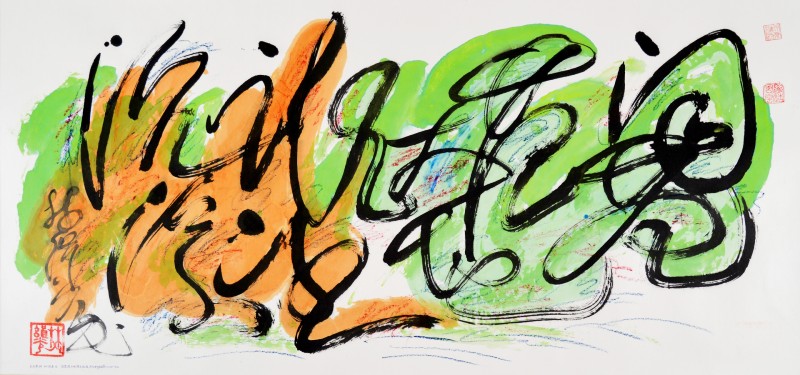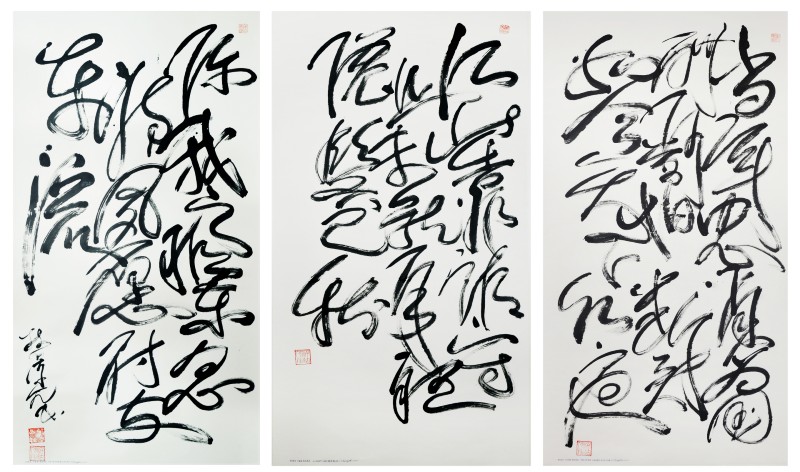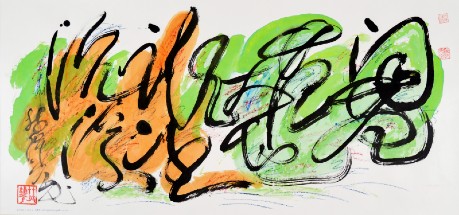
NEW YORK – Kwong Lum’s “Unrestrained Freehand Cursive Calligraphy” exhibition is now on view at Gianguan Auction Gallery, located at 39 W. 56th St., in Manhattan.
One of the most intriguing aspects of Kwong Lum’s prolific output as an artist is his ability to weave images from the East into the West and to find amazing correlations between the two. The renowned Chinese American artist uses calligraphy in a present pictorial space in an innovative way.
For Lum to work this way with such confidence and alacrity, he needed to perfect the traditional way of the brush. His inspiration came from the great Chinese philosopher Lao-Tzu, who spoke often about being “formless” and “nameless,” and who advocated against superficiality and artifice. His Taoist philosophy recommended going deeply into nature to locate the center of one’s being. In doing so, the artist could understand the way of the brush by evoking the spontaneity of nature and thus going beyond the visible world of artifice.
Lum acknowledges that while he is philosophically grounded in the work of Lao-Tzu, it was his disciple Chuang-Tzu who took the concept of spontaneity to new heights of expression. To find spontaneity in art, the artist must discover the laws of nature within himself. Later, the Northern Song art critic Guo Xi further elaborated on the identification with nature by persuading artists to feel the rhythm of rivers, mountains and passing clouds as internal structure. According to Guo Xi, the artist perfects himself by becoming one with nature.

Lum understood the profundity of this concept as he broke away from writing in the traditional sense. By foregoing the meaning of the individual sign, the function of calligraphy emphasizes “floating clouds” and “immortal dancing” – in essence, the ecstasy of mind and body conjugated through the unbridled spontaneity of the brush.
The exhibition is sponsored by the Chinese American Cultural & Arts Association. Virtual viewing is available at www.gianguanauctions.com.
Click to read more about Kwong Lum and the museum in China named in his honor. The museum contains many of Lum’s revered artworks as well as priceless antiquities from his personal collection.
# # #


